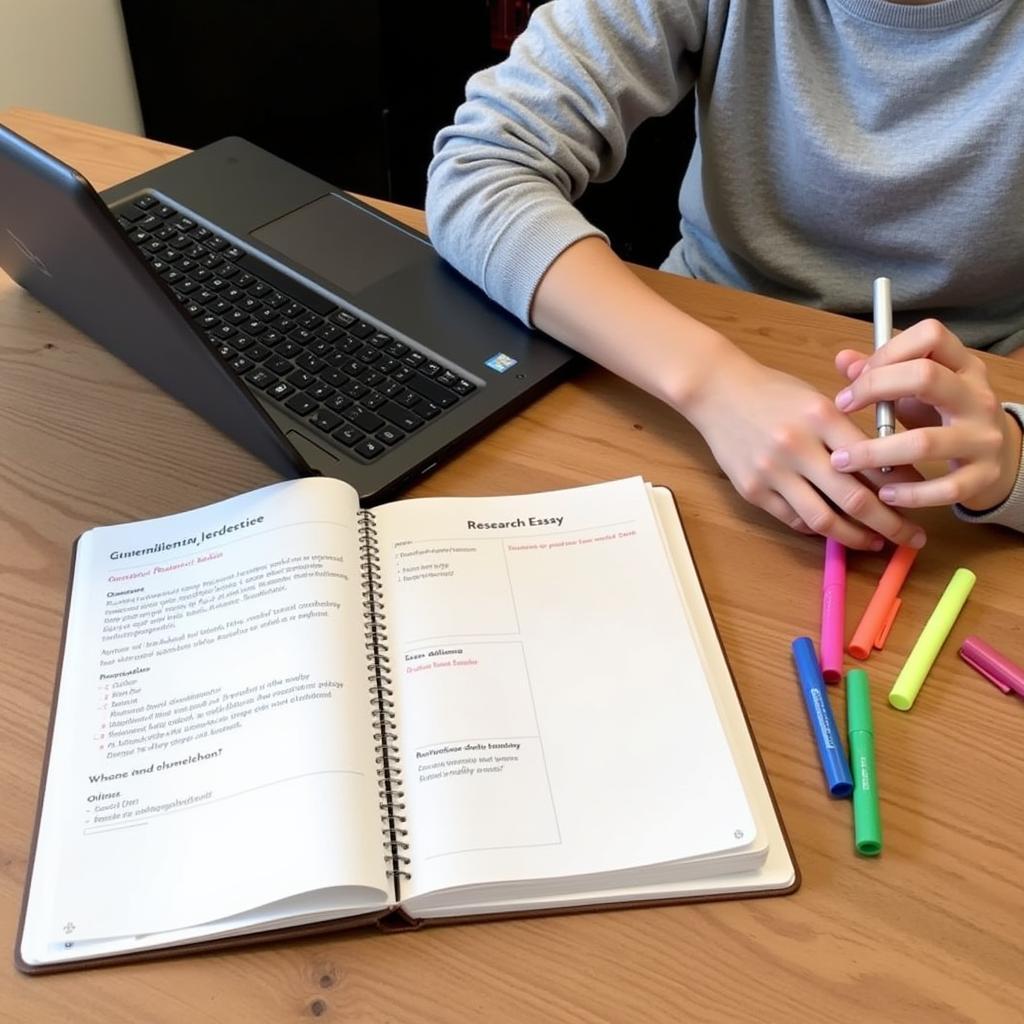Writing a research essay can seem daunting, especially if you’re unfamiliar with the process. But fear not, intrepid researcher! This comprehensive guide will equip you with the tools and knowledge to craft a compelling and well-structured research essay.
 Research Essay Outline
Research Essay Outline
Understanding the Assignment
Before diving headfirst into the research abyss, take a moment to thoroughly understand your assignment guidelines. Pay close attention to the essay topic, length requirements, formatting style (e.g., MLA, APA, Chicago), and submission deadline. Having a clear understanding of the expectations will ensure you’re on the right track from the outset.
Conducting Thorough Research
 Academic Research Resources
Academic Research Resources
Now it’s time to delve into the fascinating world of research! Start by gathering information from credible sources, such as academic journals, books, reputable websites, and expert interviews. Utilize keywords and phrases related to your topic to refine your search. Remember to critically evaluate each source for its credibility, accuracy, and relevance to your research question.
Crafting a Strong Thesis Statement
A thesis statement is the backbone of your research essay. It’s a concise statement that presents your main argument or claim. Your thesis statement should be specific, arguable, and supported by evidence from your research. For example, instead of stating, “Paranormal activity is a fascinating subject,” a more effective thesis statement might be, “The increase in reported paranormal activity in the 21st century can be attributed to a combination of social, psychological, and technological factors.”
Creating an Outline
An outline is essential for organizing your thoughts and ensuring a logical flow of ideas. A typical research essay structure includes an introduction, body paragraphs, and a conclusion.
- Introduction: Start with a hook to engage the reader, provide background information on the topic, and end with your thesis statement.
- Body Paragraphs: Each body paragraph should focus on a specific aspect of your thesis statement. Present evidence, analysis, and examples to support your claims.
- Conclusion: Summarize the main points, restate your thesis in a new light, and offer concluding remarks or implications for future research.
Writing with Clarity and Precision
When writing your research essay, aim for clarity, conciseness, and precision in your language. Use transitional words and phrases to ensure smooth transitions between paragraphs and ideas. Avoid jargon and technical terms that your audience may not understand. Remember to cite your sources properly to avoid plagiarism.
Citing Your Sources
Proper citation is crucial in academic writing. Use the formatting style specified in your assignment guidelines (e.g., MLA, APA, Chicago) and ensure that all sources are correctly cited in both in-text citations and a bibliography or works cited page.
Revising and Proofreading
Once you’ve completed your first draft, take some time to revise and proofread your work. Check for clarity, coherence, grammar, spelling, and punctuation errors. It’s helpful to have a fresh pair of eyes review your essay for any errors you may have missed.
Mastering the Art of Research Writing
Writing a research essay is a skill that develops over time. By following these steps and practicing consistently, you’ll be well on your way to crafting compelling and well-researched essays.
 Student Revising Essay
Student Revising Essay
FAQs about Writing a Research Essay
1. How long should my research essay be?
The length of your essay will depend on the specific requirements of your assignment. Always adhere to the guidelines provided by your instructor.
2. Can I use “I” in my research essay?
In general, it’s best to avoid using first-person pronouns like “I” or “me” in formal research essays. However, there may be instances where using first-person is appropriate, such as when sharing personal anecdotes or reflecting on your research process. Consult your instructor for clarification on their preference.
3. What is the difference between a bibliography and a works cited page?
A bibliography includes all the sources you consulted during your research, even if you didn’t directly cite them in your essay. A works cited page, on the other hand, lists only the sources that you directly quoted, paraphrased, or summarized in your essay.
4. How can I avoid plagiarism?
To avoid plagiarism, always cite your sources properly. When quoting directly from a source, enclose the borrowed material in quotation marks and include an in-text citation. When paraphrasing or summarizing, present the information in your own words and cite the original source.
5. What should I do if I’m struggling to get started on my research essay?
If you’re feeling stuck, don’t hesitate to seek help from your instructor, a writing tutor, or a librarian. They can provide guidance on narrowing down your topic, conducting research, or structuring your essay.
Exploring Further: Delve Deeper into Research Writing
- Literary research paper example: Discover the nuances of crafting a research paper focused on literary analysis.
- Conduct a research: Uncover effective strategies and resources for conducting thorough and insightful research.
- tamu medical scholars research pathway program: Explore specialized research programs that foster in-depth exploration within specific fields of study.
Need Assistance with Your Research Endeavors?
Our team of dedicated research specialists is here to assist you with any questions or guidance you may need. Contact us at 0904826292 or [email protected]. You can also visit us at No. 31, Alley 142/7, P. Phú Viên, Bồ Đề, Long Biên, Hà Nội, Việt Nam. We’re available 24/7 to support your research journey.